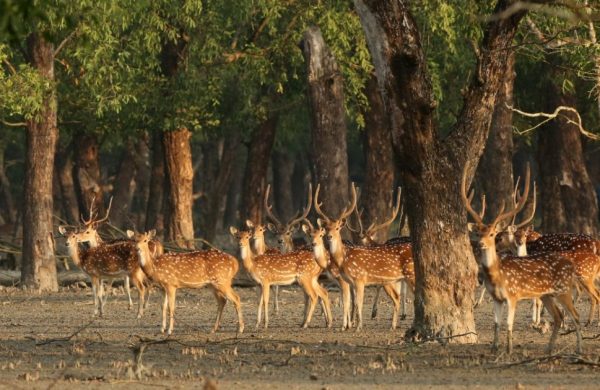‘Sundarbans may need 40 years to recover biodiversity losses’
- Update Time : Thursday, May 30, 2024

TDS Desk:
After Cyclone Remal left a trail of destruction in the Sundarbans, experts and officials fear that it may take up to 40 years to recover the losses to its biodiversity.
Forest officials and experts say it is a tall order to estimate the biodiversity losses. One of the largest of its kind globally, the mangrove forest saw infrastructural losses amounting to around Tk6 crore.
The gol pata (nipa palm) forests covering 11km were badly damaged as the super cyclonic storm turned out to be the worst of its kind in the past few years, with a tidal upsurge inundating the forest by up to nine feet for nearly two days.
The habitats of animals living in the area were washed away, leaving a large number of species, especially deer, boars, snakes and monitor lizards, locally known as gui shaap, dead.
The freshwater ponds there were also flooded with saline water from the sea, causing a crisis of potable water.
Losses three times more than in Amphan:
Sources estimated the losses to be three times higher than that incurred in Cyclone Amphan in May 2020.
A whopping 12,358 trees were damaged in that cyclone while the Forest Department estimated Tk2.15 crore in infrastructural losses.
Abu Naser Mohsin Hossain, divisional forest officer of the Sundarbans West Forest Division, said that the forest in Khulna and Satkhira under his jurisdiction incurred a loss of Tk2.61 crore.
“One pontoon gangway, 18 jetties, 2,630-foot road under nine Forest Department offices, three barracks of Forest Department personnel, eight solar plates, two wireless towers and two generators were damaged,” he said.
Additionally, saline water inundated 14 freshwater ponds there.
“The infrastructural losses can be recouped, but not the damage done to the forest’s biodiversity,” Mohsin said.
“The Sundarbans has to do it by itself and the entire process may take 30-40 years,” he said.
The Forest Department official noted that the forest was home to countless animals.
“It is very tough to estimate the biodiversity-related losses,” he said.
Hawladar Azad Kabir, officer-in-charge of the East Sundarbans Karamjal Wildlife and Breeding Centre, said that the wooden poles for tourist traffic were damaged by Cyclone Remal, and many trees were brought down. However, it is not yet possible to ascertain the full extent of the damage caused to the entire Sundarbans, including its vegetation.
Dr Sheikh Faridul Islam, chairman of Save the Sundarbans Foundation, emphasized the importance of maintaining sufficiently high hills and shelters for the wild animals of the Sundarbans.
He said such measures could minimize erosion damage and that the banks of freshwater ponds should be raised to prevent floodwater from entering.
30 deer carcasses found:
Thirty dead deer were recovered from the Katka and Dubla areas of the forest on Tuesday.
Mohsin said: “We may never know the actual body count of the deer as many were already washed away.
“It is tough to locate the animals with less than three-foot height. So, it is not possible to estimate the overall losses these animals suffered,” he said.
Mihir Kumar Doe, Conservator of Forests, Khulna Circle Division, said that the Sundarbans witnessed an up to ten-foot high tidal surge on Sunday and Monday, resulting in the inundation of a vast tract of the Sundarbans, including Katka, Kochikhali, Dubla, Shela, Nilkamal, Mandarbaria and some other parts.
The forest officials buried the carcasses of the 30 deer inside the forest.
“Other than the deer, more animals might have died. We’re looking for those,” Mihir said.
Khulna University Environment Science Professor Abdullah Harun Chowdhury said that the Sird and Aila cyclones, too, wreaked havoc in this region, but they did not last as long as Cyclone Remal.
“So the Sundarbans was subjected to massive losses due to a heavy tidal upsurge,” he said.
The expert said that the forest needs to be protected from human-induced harm too.
“In a bid to save animals from cyclones, high shelters should be constructed. There should always be a freshwater supply,” he suggested.


















